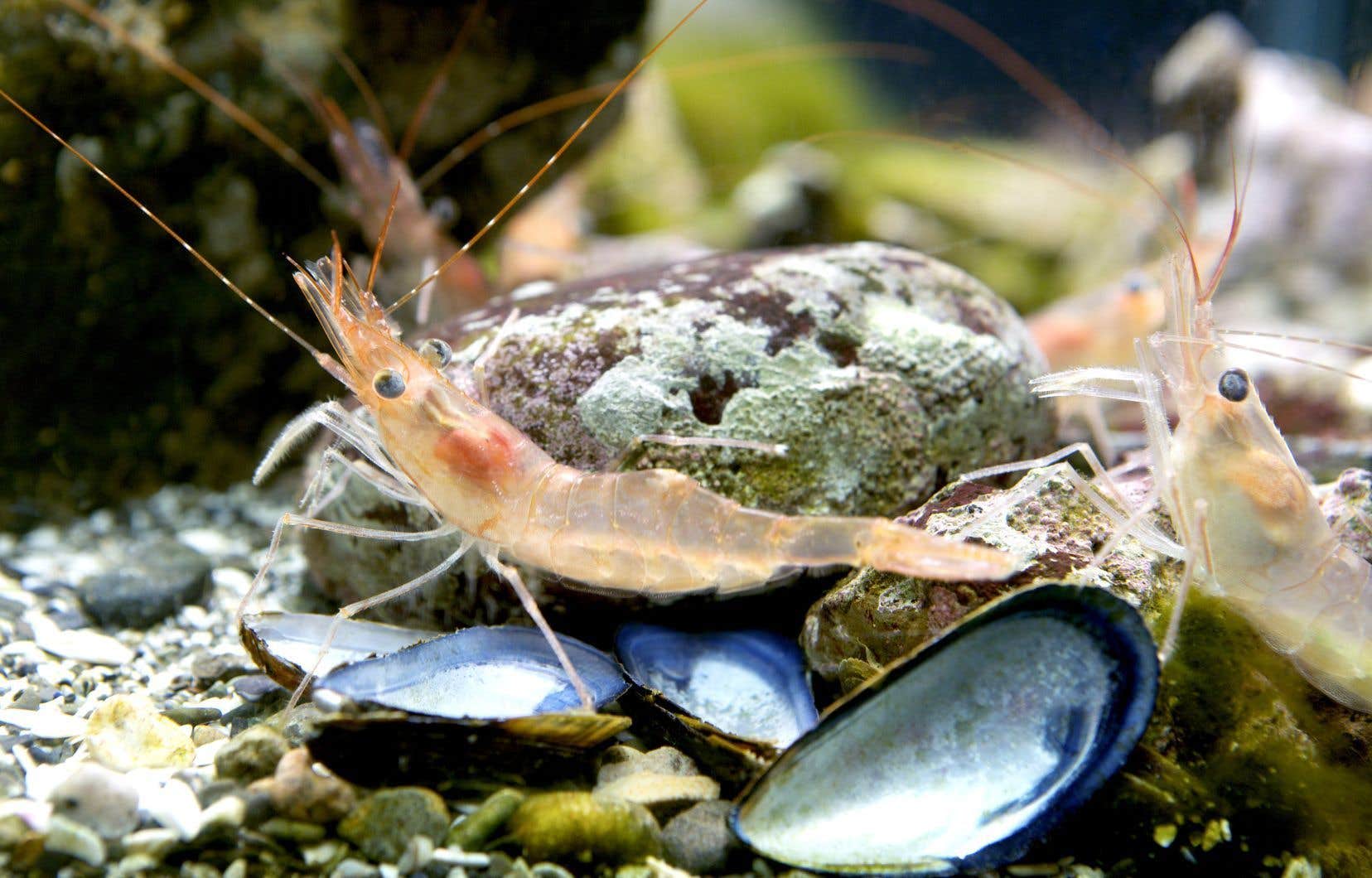Consumers who wish to opt for sustainable seafood products should avoid northern shrimp, the famous Matane shrimp. This is one of the recommendations of the new Fourchette bleue list, which publishes each year a guide to the marine species of the St. Lawrence to consume with the aim of avoiding harmful fishing for the protection of biodiversity.
Fourchette bleue published its 15th on Mondaye list of marine species “from sustainable St. Lawrence fisheries” and for the first time, the northern shrimp has been excluded, like the Greenland halibut, since these two species “are experiencing a spectacular decline in their biomass”.
“We have already been observing the decline of northern shrimp for several years, but this year, it has become obvious that the decline extends to all fishing zones,” summarizes the general director of Exploramer, which is leading this initiative which is is based on scientific consultations and with the fishing industry.
Warming and predation
The situation of the northern shrimp, also known as the Matane shrimp, has raised serious concerns for several years among federal scientists who monitor the situation of the species, due to a constant decline in stocks in the estuary. and the Gulf of St. Lawrence.
The researchers’ findings are also unequivocal: “the warming of deep waters and the increase in predation by redfish appear to be important factors contributing to the decline of shrimp. These ecosystem conditions are not expected to improve in the short to medium term,” reads the federal assessment of the situation.
To try to slow down the decline, the Trudeau government announced an abrupt drop in shrimp quotas for 2024. This reached a little more than 3,000 tonnes, a figure approximately five times lower than in 2023. The federal government also announced the lifting of the moratorium in force since 1995 on redfish fishing, whose stocks have experienced strong growth in recent years.
Redfish is also on the Fourchette Bleue list for 2024, which includes 13 species of fish, 15 seafood (molluscs and crustaceans), two marine mammals and 15 varieties of algae. Sandra Gauthier recalls in the same breath that the “ecoguide” promotes the marine products of the St. Lawrence “under-exploited and unknown to the general public”. This is the case for the American anglerfish, the sculpin, the Atlantic hemitripter, the silver hake, the rock crab, the green sea urchin, the giant scallop and the short-finned squid.
Eat seal
The two marine mammals on the list are the harp seal and the gray seal. The federal Department of Fisheries and Oceans Canada estimates the harp seal population at more than 7.6 million individuals in eastern Canada. “Sustainable harvest levels” are estimated at 425,000 animals per year.
And there are more than 360,000 gray seals in the east of the country, particularly in the Gulf of St. Lawrence. However, these animals, which can weigh up to 270 kilograms (600 pounds) as adults, are partly responsible for the decline of at least ten species of fish, including Atlantic cod, American and gray plaice, yellowtail, white hake and winter skate.
“In this context, seal hunting conducted in a responsible and sustainable manner and the consumption of this meat could help regulate the population of this mammal and reduce the impact of its predation on several weakened stocks. This wild meat, without hormones or antibiotics, is rich in proteins, iron and omega 3,” summarizes Sandra Gauthier.
Although animal rights groups have campaigned against the hunt for decades, interest in seal meat is growing, she adds. Dozens of restaurateurs and grocers would be ready to market seal products. Mme Gauthier therefore calls for the development of this sector, which would involve the granting of permits allowing the processing of seal in factories which process commercial fishing products part of the year.
Sensitization
Fifteen years after the start of the Fourchette bleue initiative, Sandra Gauthier also says she is seeing positive repercussions from this “ecoguide”.
“I want to believe that it is a little thanks to the Fourchette bleue that Quebec now pays more particular attention to its marine products. The population is becoming more informed about the species that come from the St. Lawrence, fishing techniques, the state of stocks, and the nutritional and gastronomic value,” she points out.
Far too many of our fish and seafood, considered very high quality products, go abroad, while our grocery stores sell us products imported from Asia or South America, underlines Mme Gauthier.
A simple visit to a large supermarket reveals that they mainly sell imported species, for example shrimp from Argentina or “Pacific”, salmon “from the Pacific”, or even tilapia or pangasius ” breeding”. The latter mainly comes from aquaculture farms in Vietnam with highly criticized practices.
The idea is therefore that, if Quebec consumers turn to local products that are sustainably fished, they will not contribute to overfishing, the degradation of marine ecosystems or the slavery at sea that exists in certain regions of the world. This local consumption also helps reduce our impact on the climate.
